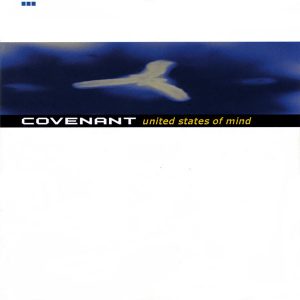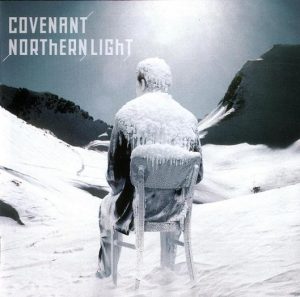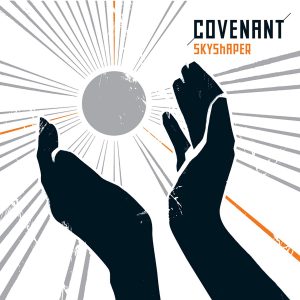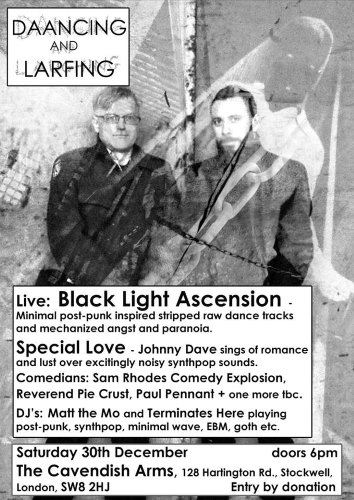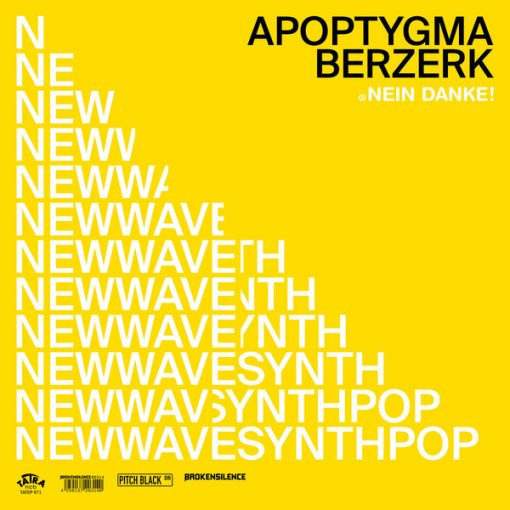Covenant Ascends
Towards the end of 1999, VNV Nation (more on them in a future piece) released an album called ‘Empires’. Early in 2000, Apoptygma Berzerk (they’re coming too) gave us ‘Welcome To Earth’. Two bands with industrial/darkwave roots both issuing album with distinct influence drawn from both synthpop and the more commercially accessible dance styles (late 90s trance especially), a combination that later became known as ‘futurepop’. Covenant might not have officially signed up to this movement, but with their own music coming from similar roots, the bands appearing on the same festival line ups and being played by the same DJs, they got lumped in more often than not.
And why not, when you you have an album as good as United States of Mind as a statement? We get straight down to business with the bouncing ball distorto-kick, schaffel rhythm and Blade Runner-inspired lyricisms of Like Tears In Rain. In one song it sums the whole spirit of the album – reflective and morose, for sure, yet also catchy and danceable. Roy Batty’s death speech in Blade Runner remains one of the most quoted cinematic moments in this entire genre, but the way Covenant adapt the speech into a song beyond the usual verbatim samples is something few bands have equalled.
It’s one of no less than five out-and-out anthems on offer. No Man’s Land is a straight-ahead percussive blast with few complications. One may say they same about One World One Sky, yet the eight-word refrain repeated without variation throughout remains one of the best-remembered lines on any dancefloor where this was ever played. There are also two songs, Dead Stars and Tour De Force that deal with the issue of stardom. The blatant synthpop of the former resulted in another irritatingly catchy hit that became renowned to the point of being overplayed. For me, Tour De Force, with it’s clever use of gambling metaphor, is the track that really defined where Covenant were at this point.
The other tracks on this album have been largely forgotten in comparison, though this is a pity. Each has it’s appeal, be it the straightforward pop of Afterhours, the breakbeats of Unforgiven or the drawn-out Still Life, which even squeezes in a lyrical reference to Leonard Cohen’s ‘Closing Time’. The curiosity is Helicopter, hated by those who just bought this for the club hits, but several years of close attention made me realise the point behind the songs philosophical musings – and those into electronic music production will be wondering for hours where some of those sounds came from.
Singles and Versions: Three singles were released. ‘Tour De Force’ includes a near-identical Club Version, plus two overly-technical remixes, including one from future member Daniel Myer and the aimless outtake “It’s Alright”. “Dead Stars” comes with Radio and Club versions (again, just slight variations on the original) plus a “Dub Mix” which is more of a curiosity. ‘Der Leiermann’ is a version of “Like Tears In Rain” with new vocals, adapting an old Franz Schubert verse. It fits the music well, but being English, I prefer the version I actually understand. Both these singles also feature “We Break Down”, a listenable but unnecessary techno piece which sounds like an unfinished out-take.
There’s also a limited ‘Travelogue’ version with a bonus CD with 3 extra tracks, of which “Fuzzy Logic” stands out as the only real non-album song from this era to be worthy of acquisition, a slight trance feel and the semblance of an actual song – though still not quite up to the standards of the album
2002 was “peak Futurepop”. VNV, Apop and Icon Of Coil all issued albums that more or less cemented in the definition of the style early in the year. Covenant, associated with the genre but never declaring affiliation, held out to October, when Northern Light appeared. Production credits went to Jacob Hellner, who is more commonly linked to metal bands, but his rich, mature production suits this next development in Covenant’s sound perfectly. You can almost feel the Swedish winter closing in when the opening bell chime of Monochrome sets in.
Every Covenant album has anthems, and this album gave us a further three. Call The Ships To Port is a worthy successor to Figurehead with it’s huge, ocean-spanning sound and maritime metaphor. We Stand Alone reminds one of the previous album, a track that eskews technicalities for a pure hands-in-the-air singalong. And then there’s Bullet, total ear candy for lovers of fuzzy sawtooth synths and e-piano melodies. We Want Revolution might count as a fourth, but I’ve never been able to take this song seriously due to the Clas habit of doing a silly dance to this whenever they played it live. It always seemed to draw question to his role in the project.
Away from the club hits, Invisible and Silent sees a blatant attempt at a synthy power ballad, complete with a lighter-waving chorus (people still smoked back then) and the cheesiest truck-driver-gear-change ever heard in electronic music. Yet I’ve always been a sucker for such things, and hence it’s always been on my Covenant playlist. The album does suffer from some drop-off later on – Winter Comes and Rising Sun are both good examples of the more restrained school of Covenant album track, but the final pairing of Scared and Atlas do seem be anti-climatic after what came before. The good still far outweighs the bad, and there seems to be a real feeling of a self-contained album here rather than a collection of songs.
Singles and Versions: If you’re still collecting the CD versions, avoid the Sony KA2 version, it has a very aggressive form of copy protection that even confuses regular CD players – the Metropolis version is fine and should be easily obtained even today. There is also a vinyl version, rare for the time, with four extra tracks. Two are the Club version from the singles, plus an interesting mix of “Bullet” and an exclusive song “Don’t Go” which I have to admit I’ve never found in digital form.
The two singles – “Call The Ships To Port” and “Bullet”, both also got CD and vinyl releases with different combinations of remixes on each. In the case of “Call The Ships…”, the mixes are generally quite strong, reworking key phrases from each song but generally retaining the spirit of the original in each case. A couple of the “Bullet” mixes fall into the “too technical” category, though “Atom Heart” is a nicely-textured bonus track that could have settled nicely in the later stages of the album.
There was a long wait for the next Covenant album. They were playing new tracks live as soon as 2004, but it wasn’t until 2006 that we finally laid our hands (in these pre-streaming days) on Skyshaper. The lead track Ritual Noise had been in circulation for some months, one of many songs from the album that was known to give the band much indecision as to which of many mixes was the best. Still, that ascending synth and vocoder intro survives here, and as long as that’s there, it props up whichever of the slightly-different textured-noise loops they pick to follow it.
And in terms of variety, it’s all here. The fuzzy synths of Pulse, the schaffel rhythm and public transport subject matter of 20Hz (an obvious favourite for me), the dream-trance piano of Brave New World and even the ever-so-densely-mixed The Men. The only real wobble is the misguided percussion demo of Sweet and Salty. Many people despise the minimal melodic synth of Happy Man, but I found repeated listens revealed a melancholic tones I hadn’t previously appreciated. The closing ballad The World Is Growing Loud seems to be going for the feel of Invisible & Silent from the last album – almost getting there but not quite. And that sums up the overall feel of Skyshaper – it’s undoubtedly good, but does it have the qualities of a true great? Not quite.
Singles and Versions: There is a 2CD edition, dominated by the 42-minutes ‘Subterfugue for 3 Absynths’, a far-too-long and not-varied enough knob twiddling exercise. Make it through that and you get low-key bonus track ‘Relief’ and a mix of ‘Ritual Noise’ with even more vocoding than the original.
The ‘Ritual Noise’ single itself has four different versions of the song, three of them ‘in house’. It’s even odds whether you’ll like any of these more or less than the album version. There’s also two exclusive tracks, of which ‘XRDS’ will appeal to those who like the more minimal Covenant style, though as a Romford boy, it actually reminds me of Underworld’s album tracks from around the same time. ‘Brave New World’ also got a single release, again with the pattern of ‘four mixes, three of them by the band themselves’. The bonus track here “The New Virus” is an unnecessary technical demo rather than a fully worked song.

